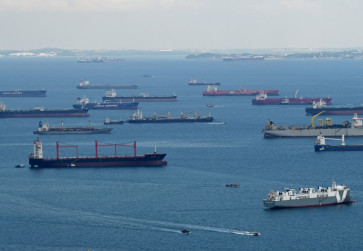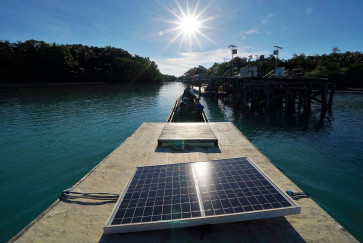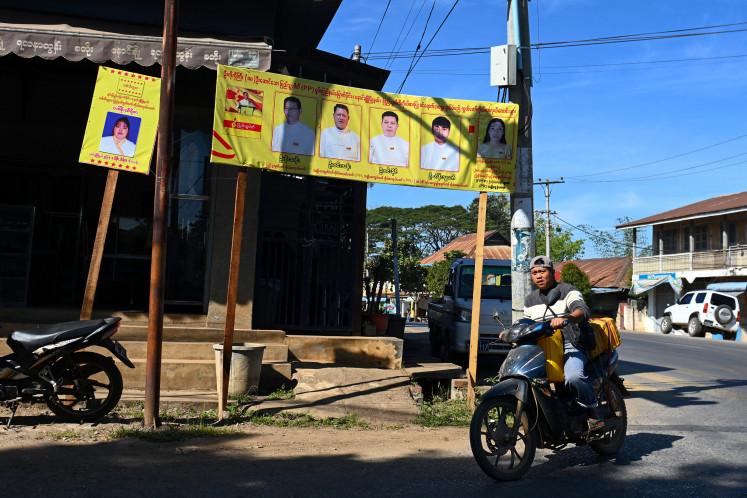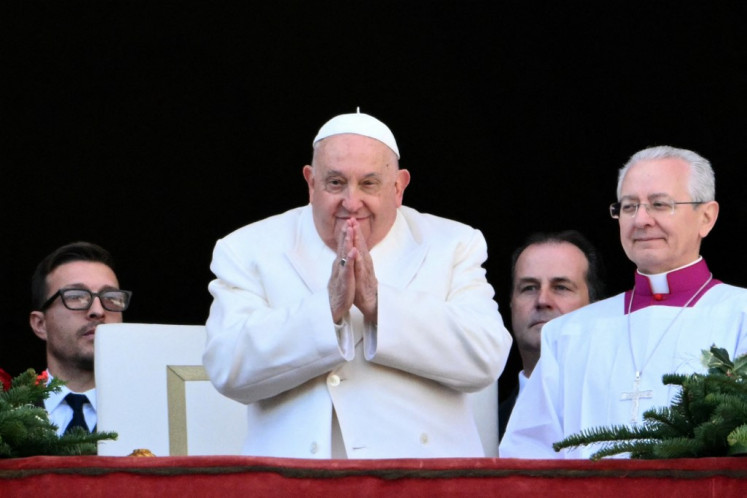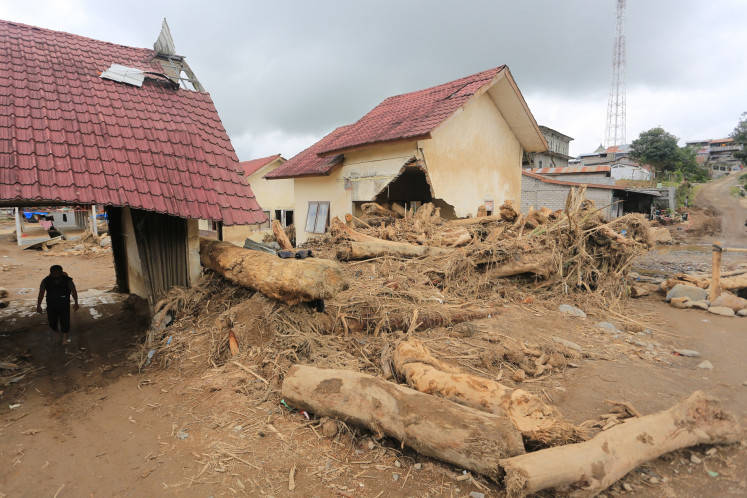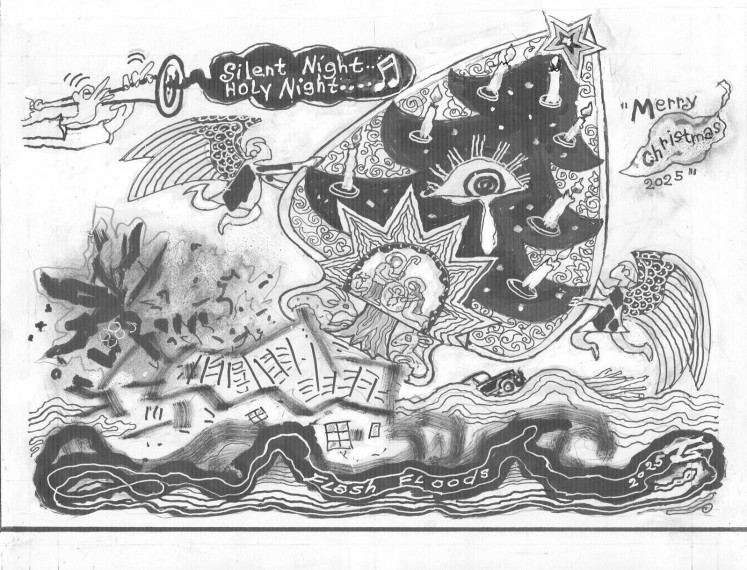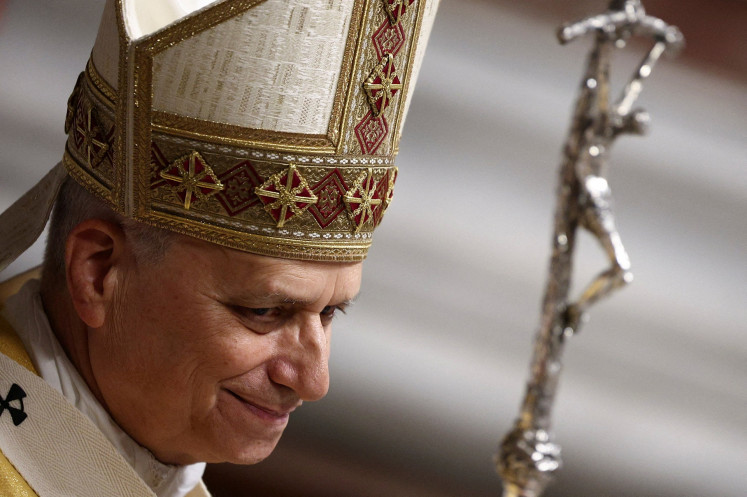Popular Reads
Top Results
Can't find what you're looking for?
View all search resultsPopular Reads
Top Results
Can't find what you're looking for?
View all search resultsClimate justice: From rhetoric to real responsibility
For developing nations like Indonesia, COP30 in Belem is not merely another conference; it is a moral test of the world’s commitment to justice,
Change text size
Gift Premium Articles
to Anyone
 Oxfam activists wearing oversized masks representing (from left to right) European Commission President Ursula Von der Leyen, South Africa's President Cyril Ramaphosa, Argentina's President Javier Milei, United States President Donald Trump and Canada's Prime Minister Mark Carney pose on Wednesday during their “Big Heads“ protest stunt at the riverbank of the Federal University of Para in Belem, Brazil, on the sidelines of the COP30 United Nations Climate Summit. (AFP/Mauro Pimentel)
Oxfam activists wearing oversized masks representing (from left to right) European Commission President Ursula Von der Leyen, South Africa's President Cyril Ramaphosa, Argentina's President Javier Milei, United States President Donald Trump and Canada's Prime Minister Mark Carney pose on Wednesday during their “Big Heads“ protest stunt at the riverbank of the Federal University of Para in Belem, Brazil, on the sidelines of the COP30 United Nations Climate Summit. (AFP/Mauro Pimentel)
T
he world is not short of promises; it is short of courage to fulfill them. More than a decade ago, developed countries pledged US$100 billion annually to help poorer nations confront the climate crisis.
Yet that promise arrived late, its value has eroded and its credibility is questioned. As leaders gather in Belém, Brazil, for the 30th United Nations Climate Change Conference (COP30) from Nov. 10 to 21, an old question echoes once again: Will the world’s richest nations finally pay their climate debt, or will they again hide behind green rhetoric?
The climate crisis is not merely about rising temperatures or melting glaciers - it is fundamentally a question of justice: between those who prospered from centuries of industrialization and those now suffering its consequences.
This injustice has deep historical roots. Since the Industrial Revolution, developed nations have triggered massive emissions, while developing countries - despite minimal contribution - bear the heaviest toll. From Pakistan’s floods to Malawi’s droughts and South Asia’s extreme monsoons, the costs of carbon are unevenly distributed.
This is the moral foundation of climate debt: the obligation of wealthy nations to take financial and ethical responsibility for their historical emissions. Yet, this recognition has remained largely rhetorical. The Organisation for Economic Co-operation and Development reported in 2024 that the $100 billion annual financing target was achieved only in 2022 - two years late - and was primarily delivered through loans, not grants.
For countries like Sri Lanka, Pakistan or Zambia, this so-called aid often becomes a fiscal trap, deepening debt rather than enabling resilience. The 2023 Oxfam “Climate Finance Shadow Report” exposes the illusion further: of the $83.3 billion claimed by developed countries in 2020, only $24.5 billion was actual usable finance. The rest was inflated through double counting and commercial-rate loans: a form of “solidarity” that profits lenders.
Moreover, the 2022 United Nations Framework Convention on Climate Change (UNFCCC) Standing Committee on Finance adds that over 70 percent of climate finance worldwide still comes as loans. Instead of offering relief, such mechanisms tighten the financial noose around vulnerable nations.
Your Opinion Matters
Share your experiences, suggestions, and any issues you've encountered on The Jakarta Post. We're here to listen.
Thank you
Thank you for sharing your thoughts. We appreciate your feedback.


